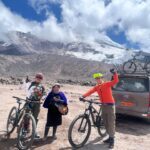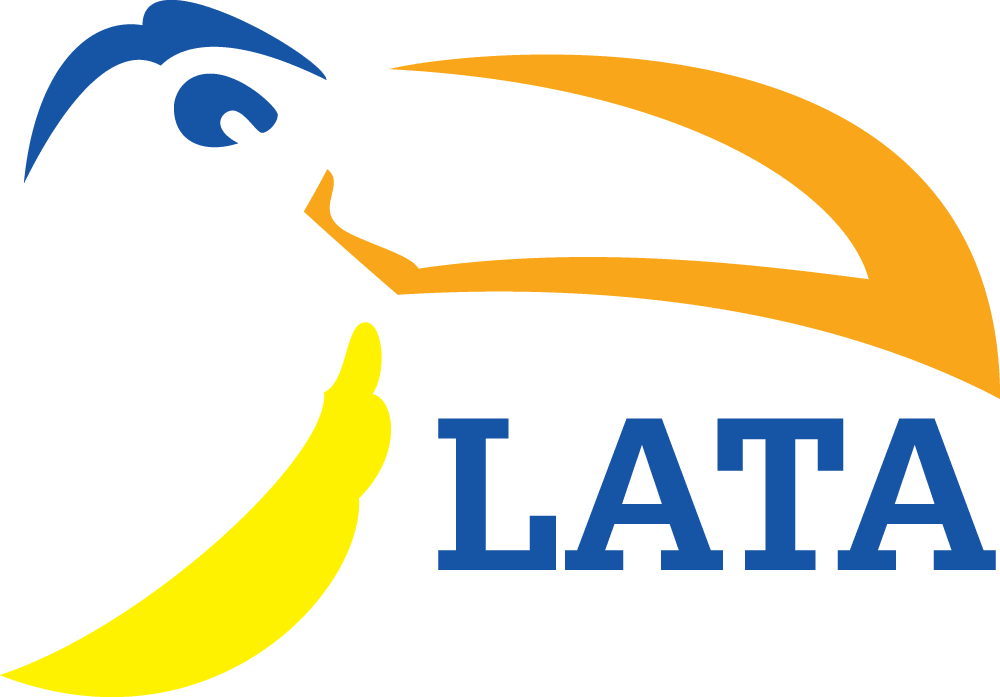Bolivia Travel Highlights
Travel advice and highlights of Bolivia.
Land-locked Bolivia is a country of dramatic landscapes and fascinating native cultures and traditions.
The Altiplano or “High Plain”, averaging 3,800metres above sea level, is its most populous region. This vast, luminous plateau is flanked to east and west by parallel Andean ranges.
La Paz, the world’s highest capital, lies in a deep canyon at the edge of the Altiplano, and at the foot of Illimani (6,400m). It is a striking city for its dramatic setting and its strong Indian character.
Lake Titicaca is the world’s highest navigable lake. It was sacred to the Incas; according to legend, their founding emperor-gods rose from these waters to give birth to their empire. Just south of the lake stands the sacred pre-Inca site of Tiahuanaco.
On the south-western Altiplano are the Uyuni Salt Flats, the largest in the world. Here, the shimmering white salt pan and deep blue sky combine to create a truly magical spectacle.
The stunning Cordillera Real is a mountain range dominated by huge snow peaks, including Illimani and Illampu (6,380m). The Real divides the northern Altiplano from the tropical forests to the east. The Cordillera Real’s eastern slopes are characterized by the deep, sub-tropical Yungas gorges.
Further south, the tropical Chapare is the agricultural heart of Bolivia. East of this band of high forests and plantations lies Bolivia’s Oriente, a vast swathe of Amazonian jungle and savanna accounting for 2/3 of the country and featuring some of the last untouched wilderness on earth.
In the north-eastern Department of Beni, some 50% of the country’s mammals and birds reside.
Below, and in no special order, we outline some of the top places to go and things to do in Bolivia.

Carnival in Bolivia
La Paz
La Paz, one of the highest cities in the world (3,630m), boasts a truly impressive setting.
The city sits within a deep canyon, and the view as you descend from the Altiplano towards the city centre is staggering, with the towering Illimani snow peak providing a spectacular backdrop.
Other features of La Paz are its plethora of street markets – including the famous Witches’ Market – and its high proportion of indigenous Indian inhabitants, notably Aymarawomen in bowler hats.

Island of the Sun, Lake Titicaca
Lake Titicaca
Lake Titicaca (3,800m) is the largest lake in South America and the highest navigable lake in the world. This huge inland sea, split 50:50 between Bolivia and Peru, occupies the northernmost part of Bolivia’s Altiplano.
Today, the lake provides the lifeblood for numerous native lake-shore and island communities.
You can travel to the lakeside town of Copacabana and take a launch out to the Isla del Sol, an island rich in history and tradition where, according to legend, Manco Capac – the legendary founder of the Inca Dynasty – was sent to earth by Inti, the Sun God.
We spend our days exploring the island and its pre-Inca and Inca temples, and also visit the nearby, enigmatic Island of the Moon.

Reed boat on lake Titicaca
Tiahuanaco
In the middle of the Altiplano, just south of Lake Titicaca, is one of South America’s greatest archaeological legacies: the ceremonial complex of Tiahuanaco, capital of the longest-running of all Andean civilizations which flourished in Bolivia and Peru between AD 400 and 1000, before collapsing mysteriously.
In spite of being stripped of its gold by treasure hunters and dynamited by 19th Century railroad builders, much of the fine stone masonry survives.
The Gateways of the Sun and of the Moon boast some beautiful carvings, featuring stylized pumas, condors and snakes.

Uyuni Salt Flats
Salar de Uyuni
The Salar de Uyuni salt pan, one of the natural wonders of South America, lies amid the stark landscapes of the southern Altiplano.
The sharp air, deep blue skies and brilliant white salt combine to create a fantastic spectacle.
The shimmering Salar (3,650m) covers 11,000 square km, making it the largest salt lake in the world. Its blinding white haze stretches as far as the eye can see. In the middle distance several islands seem to hover above it, whileon the horizon, the outline of conical volcanoes can be seen.
To the south, there are spectacular mineral lagoons, including the green Laguna Verde and red Laguna Colorado.
There are several volcanoes too; the active Ollagua and dramatic Llicanbur located right on the Chilean border.

Salt lake of Uyuni in rainy season
The scenery on our Uyuni Salt Lakes and Altiplano four-wheel-drive expeditions is wild and dramatic.
As well as the salt lakes, there are volcanic peaks and windswept high desert landscapes.
Amid this harsh environment, you’ll see geysers, bubbling mud pools, conical volcanoes and multi-coloured lagoons full of flamingos.
You can also take a group trip across the Salt Flats, starting in Argentina, crossing Uyuni and then ending in Chile’s Atacama desert.

Trekking near Lake Titicaca
Trekking in Bolivia
The dramatic Cordillera Real and Cordillera Apolobamba mountain ranges make Bolivia one of the top South American trekking destinations, offering a wide variety of remote and challenging mountain routes.
The Cordillera Real is a range of awesome snow peaks that stretches for 100km from just south of La Paz along the eastern shore of Lake Titicaca to the sub tropical region around Sorata.
Its towering peaks, dominated by Illimani (6,400m), Illampu (6,368m) and Ancohuma (6,427m), form a barrier which separates the Altiplano from Bolivia’s extensive rainforest to the east. The range is criss-crossed by ancient pilgrimage and trading routes.
A dramatic high trekking circuit around the glaciated Illampu/Ancohuma massif is available in the north of the Real range. It features four high passes (the highest 5,045m) and awe-inspiring scenery. Grazing herds of llamas and alpacas and soaring condors can be seen hereabouts.
The Cordillera Apolobamba is a stunning and very remote mountain chain which lies to the north-west of the Real. Our high-altitude Apolobamba (6-8 days) trek takes us into the heart of the range. We trek through ancient gold-mining valleys and over high mountain passes (the highest 5,100m), with soaring snow-capped mountains all around.
The Apolobamba Circuit features 2 beautiful treks which take us through the most remote and least explored areas of the Bolivian Andes.
The first, is usually a seven-day trek in the north-east of the Apolobamba range (and within the Madidi National Park) passes through largely uninhabited countryside. Trek two (usually five days) goes through the heart of the southern Apolobamba, within the Apolobamba National Park, a large vicuña reserve where flamingos and viscachas are also seen. The trek is demanding, requiring good fitness and acclimatization levels.

Climbing Huayna Potosi, ice-covered Bolivian peaks
Mountaineering in Bolivia
Our Bolivian Mountaineering Course is an introduction to climbing which aims to teach a range of fundamental mountain skills, and can be completed in 3-6 days, depending on how much instruction you wish for.
It is set in the heart of the Cordillera Real range, in the Condoriri National Park.
We base ourselves at 4,650m, with most of the course taking place on a glacier at around 5,000m (you will need a good level of acclimatisation prior to the course). The aim is to develop the techniques required to prepare aspiring climbers, with little or no mountaineering experience, to be contributing team members on glaciated mountains.
We begin by familiarizing ourselves with the technical equipment and learn the most important climbing knots. We go on to learn and practice basic crampon and ice axe techniques, including the art of self-arrest. Other areas covered include crossing technical terrain, rope team travel, snow and ice anchors, belay systems and ice climbing.
On day three or four, accompanied by your instructor, you can put your newly learnt skills into practice with your first climbing experience proper.
There are 2 options: The easier ascent is Pequeña Ilusión (5,300m), an 8–hour round trip, with gradients of up to 40°. The harder option is Pequeño Alpamayo (5,420m). With 55° gradients, this is for climbers with reasonable technical ability. Its ascent involves a 10-hour plus round trip.
Following the course, if you are adequately acclimatised, you may like to climb Huayna Potosi (6,111m). This can be done directly after the course or after returning briefly to La Paz.

Madidi, in Bolivia’s Amazon Rainforest
Bolivia’s Amazon Rainforest
The Madidi National Park covers 2 million hectares of pristine land, ranging from cloud forest to the lowland tropical rainforests and savannas of the Amazon basin. It is one of the most bio-diverse tracts on Earth, boasting 1,000+ bird species and 44% of all neo-tropical mammals.
The richness of the flora is equally astounding. However, it is probably thanks to the very few mahogany trees found here that Madidi has escaped the destruction by loggers suffered by other tropical forests.
On our 4-9 days Madidi itineraries we base ourselves at the Chalalán Eco-Lodge, located fours hours upstream from Rurrenabaque.
The Chalalán cabins are set in gaps of mature rainforest adjacent to the Chalalán ox-bow lake and a 30-minute hike from the Tuichi River.
The lodge is a project designed to benefit the local Quetchua-Tacana Indians, and all profits go straight back into their community. The lodge aims to create a viable alternative economic activity while preserving the park’s resources (thus helping prevent destructive logging).

Chalalan Ecolodge, Bolivia
Responsible Travel and eco tourism
Chalalán is administered by the local community. All personnel, from cooks and boatmen to guides and office personnel, are fully-trained local community members.
The lodge is built mostly from materials that can be sustainably harvested, and solar panels provide electricity.
We fly from La Paz to Rurrenabaque, a relaxing jungle town located on the Beni River. On our full day here you have the option of visiting the Pampas, a wildlife-rich area of savanna a few hours up the track.
We then navigate the Beni and Tuichi rivers upstream into the Madidi National Park and Chalalán. During our stay here we explore the varied ecosystems of the rainforest. We spend time at important features such as streams, clay licks and wetlands, where wildlife congregates and take guided hikes on trails and explore the river by boat.
Local guides will introduce us to the subtleties within Madidi, explain the behaviour of local wildlife and the use ofplants by the native people. There is plenty of time for swimming and relaxation as well.

Life on the Altiplano
Biking in Bolivia
Bolivia offers plenty of spectacular mountain biking, mainly one-day downhill blasts from the high Andes to theAmazon. Our routes are thrilling and scenically stunning.
The best-known route starts at La Cumbre (4,700m), and descends 3,600m along the “world’s most dangerous road” to Yolosa, the Amazon. We use a dirt road cut into the mountainside, until we reach Yolosa (1,100m). We then drive up to sub-tropical Coroico for some R&R before driving back to La Paz.
Our highest routes take us by vehicle up to the ski-field of Chacaltaya (5,345m – the world’s highest), then down to La Paz by bike; a total descent of some 2,000m, with great views of the surrounding snow peaks.
An alternative one-day ride from Chacaltaya takes you to the Amazon on possibly the world’s longest rideable descent (4,300m)! The route goes via the Zongo Pass (4,780m) and continues to the steamy jungle village of Zongo (1,000m).

Chatting in the markets
Spanish in Bolivia
Learn Spanish or improve your Spanish skills in Sucre, the jewel in Bolivia’s crown.
This beautiful, friendly colonial city of 150,000 inhabitants is the official capital of Bolivia (La Paz is the seat of government). It is known as the “white city of the Americas” due to its well preserved, whitewashed colonial buildings with shiny red roof tiles.
Sucre has a busy university, many museums, beautiful parks and a lively central square. It is a very relaxing place to study with an excellent climate, yet the city has a lively pace of life due to the large resident student population.
Our school is located in a lovely colonial building with a courtyard just one street from the central square. It has eight classrooms, a small terrace, a patio and a video room. Courses start every Monday throughout the year and can be taken in the mornings or afternoons.
Lessons are taught in classes of five students maximum, or one-to-one.
We also offer the possibility of combining a Spanish course with volunteer work in Sucre and the rainforest. The programmes involve working with children in day-care centres and the rehabilitation of sick animals in the rainforest.
Find Tours
Can’t find what you’re looking for? Get in Touch
+44 (0)131 378 5593
+44 (0)131 554 6025
Testimonials

Cara Carter
» El Monte Sustainable Cloud Forest Lodge










